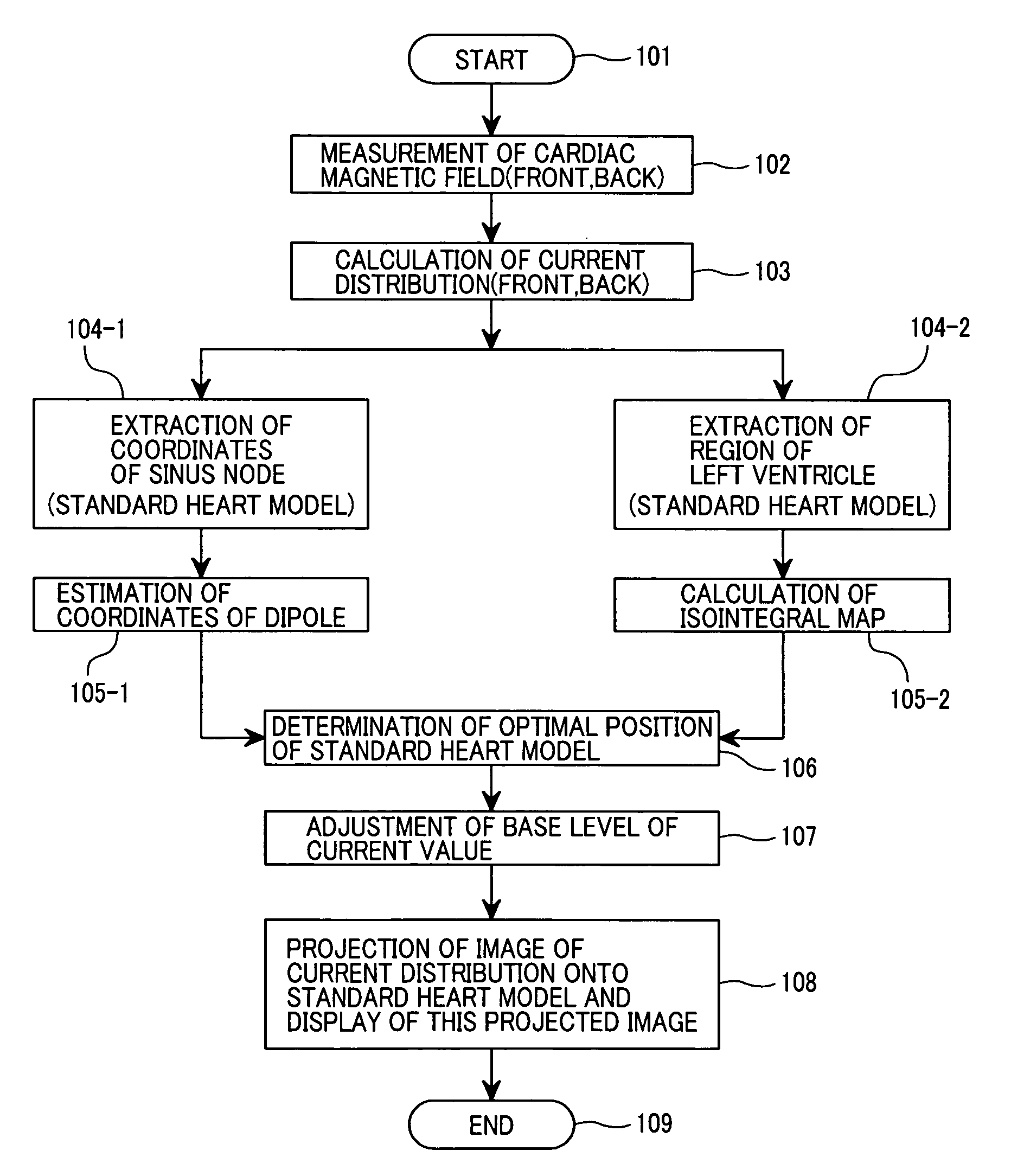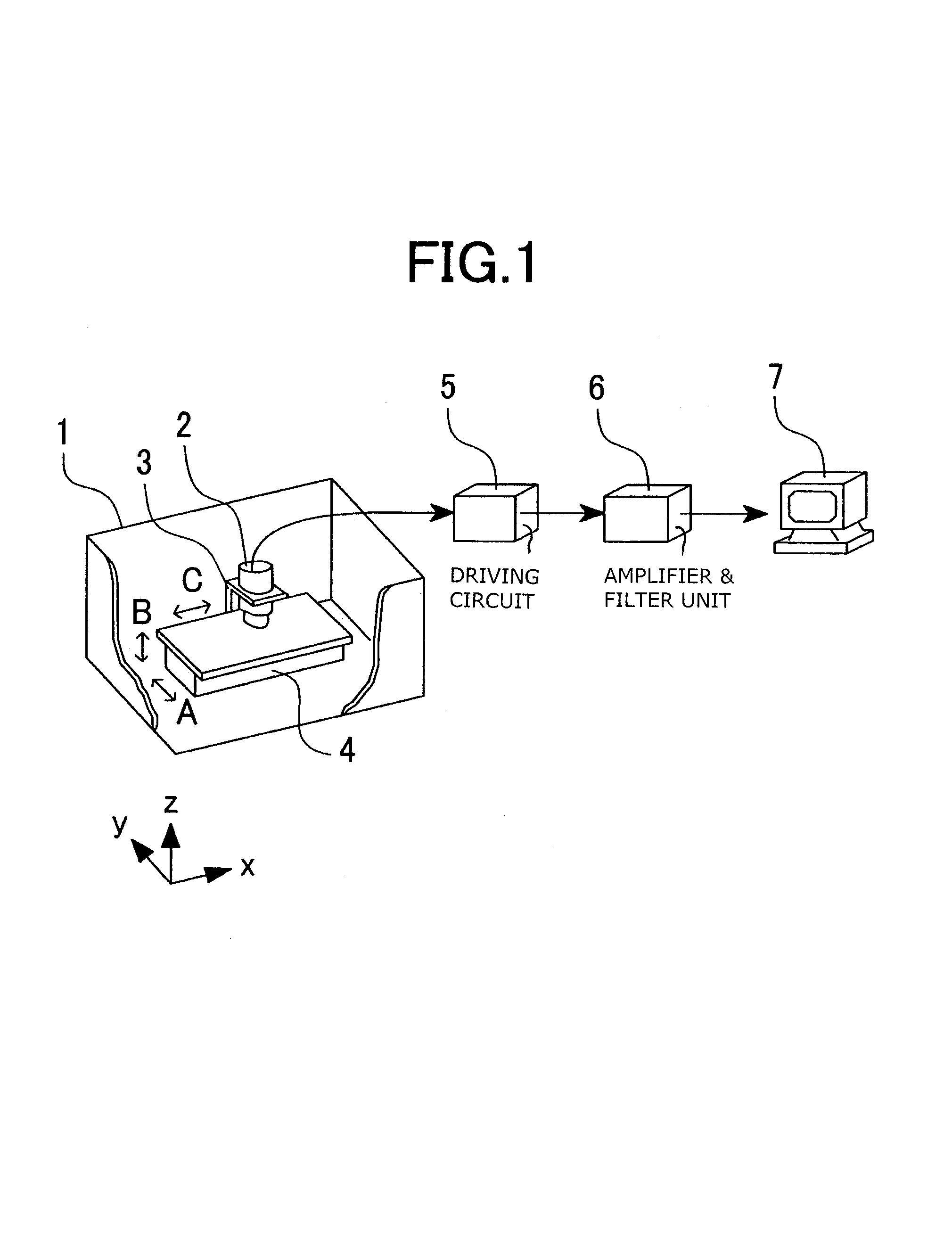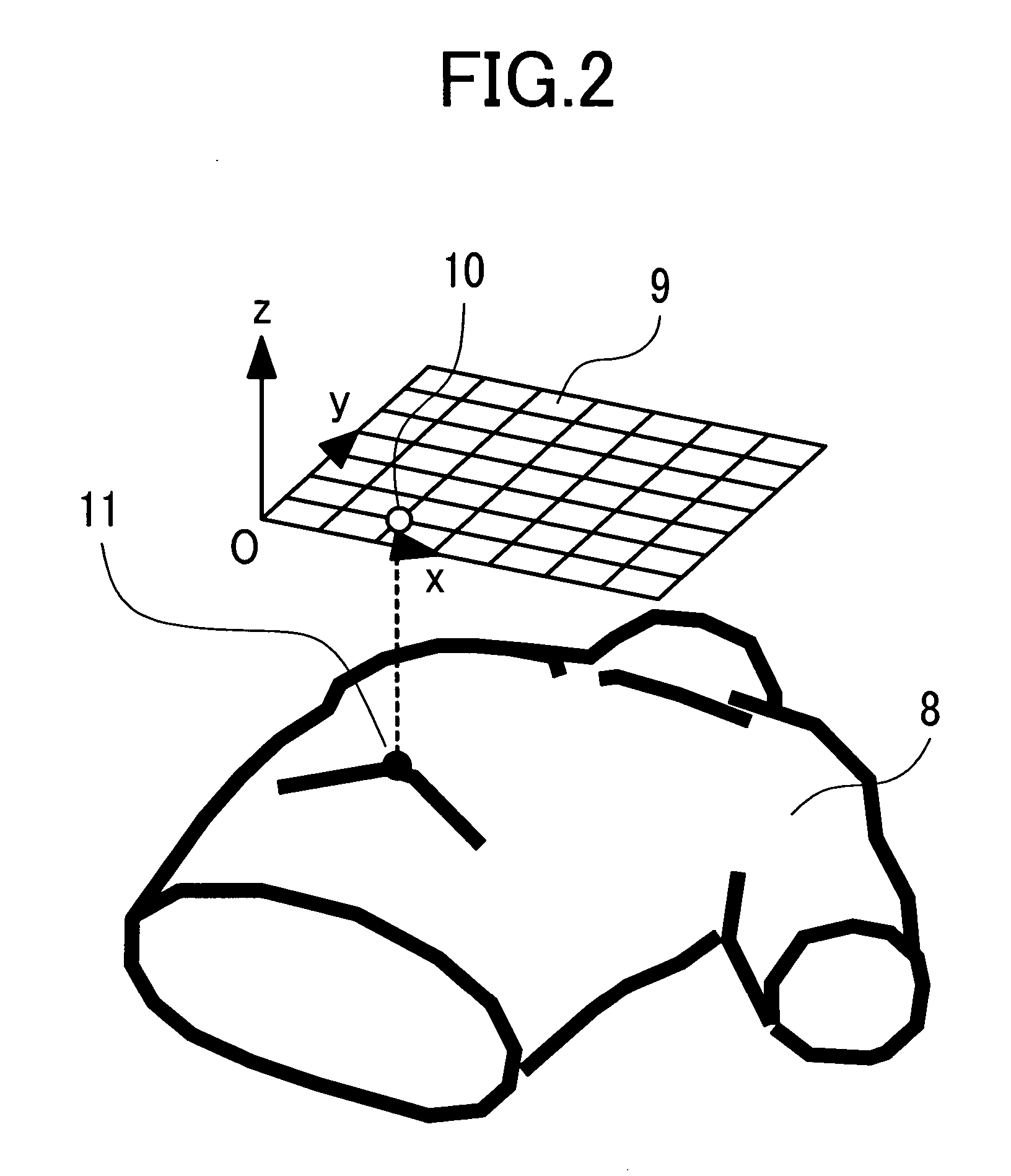Biomagnetic measurement apparatus
a technology of biomagnetic measurement and apparatus, which is applied in the direction of magnetic variable regulation, instruments, applications, etc., can solve the problems of discontinuous values, time-consuming and labor-intensive job of obtaining a pcam from images, and coming to aris
- Summary
- Abstract
- Description
- Claims
- Application Information
AI Technical Summary
Benefits of technology
Problems solved by technology
Method used
Image
Examples
first embodiment
[0070]In this first embodiment, an average value of the sizes of the hearts for three healthy subjects is used to create a three-dimensional standard heart model to be applied to a plurality of subjects. Although a standard heart model is created from image data of three healthy subjects in this first embodiment, it is also acceptable to create the model from the image data of only one healthy subject or those of two or more healthy subjects.
[0071]FIG. 4 explains the first embodiment by illustrating a measurement region of a nuclear magnetic resonance imaging apparatus (MRI apparatus, hereinafter). The measurement region 14 of the MRI apparatus is defined as a 300 mm×300 mm region located on the coronal plane of the chest wall (front side) of the subject. In order to visualize a three-dimensional heart structure, the measurement region 14 is moved in steps of 5 mm on the z axis to obtain MRI images of 1 mm in slice thickness. The standard heart model is created in the following step...
second embodiment
[0102]In the second embodiment, an optimal position of the standard heart model is determined using the coordinates of the left ventricle region as the heart position information. The left ventricle is a part that transfers blood to the aorta and its cardiac muscle is the thickest among the regions of cardiac muscle. The coordinates of this left ventricle can be found from an isointegral map of the T-wave that reflects a phase of the ventricle repolarization. The isointegral map mentioned here is obtained by integrating the amplitude of the cardiac electrical current distribution for the arbitrary time interval. An isointegral map can be calculated by the expression 5 using CAMs.
Isum(x,y)=∫|It(x,y)|dt (5)
[0103]The integral section in the expression 5 is between T1 and T2. The It(x, y) denotes a CAM at instant time t, which can be calculated by the expression 3. As shown in the expression 5, it is found that an isointegral map corresponds to a total sum of the amplitude of the cardi...
third embodiment
[0112]In this third embodiment 3, an optimal position of the standard heart model is determined using the coordinates of the sinus node and the coordinates of the left ventricle region as the information on the heart's position. The optimal position is determined in the following steps of (1) to (4).
[0113]FIG. 16 illustrates a method for extracting the left ventricle region of the three-dimensional standard heart model and a method for setting the coordinates of the sinus node on the standard heart model.
[0114]FIG. 17 illustrates a region extracted from an isointegral map and estimated dipole coordinates, in the third embodiment of the invention.
[0115](1) As shown in FIG. 16, the two-dimensional region 38 of Z=Z0 is extracted from the three-dimensional standard heart model 15 (FIG. 14), then the coordinates 39 ((x0,k, y0,k), k=1, 2, . . . , K) of the left ventricle region consisting of DEF points are extracted. Then, the coordinates (xd, yd, zd) of the sinus node 16 are set on the s...
PUM
 Login to View More
Login to View More Abstract
Description
Claims
Application Information
 Login to View More
Login to View More - R&D
- Intellectual Property
- Life Sciences
- Materials
- Tech Scout
- Unparalleled Data Quality
- Higher Quality Content
- 60% Fewer Hallucinations
Browse by: Latest US Patents, China's latest patents, Technical Efficacy Thesaurus, Application Domain, Technology Topic, Popular Technical Reports.
© 2025 PatSnap. All rights reserved.Legal|Privacy policy|Modern Slavery Act Transparency Statement|Sitemap|About US| Contact US: help@patsnap.com



